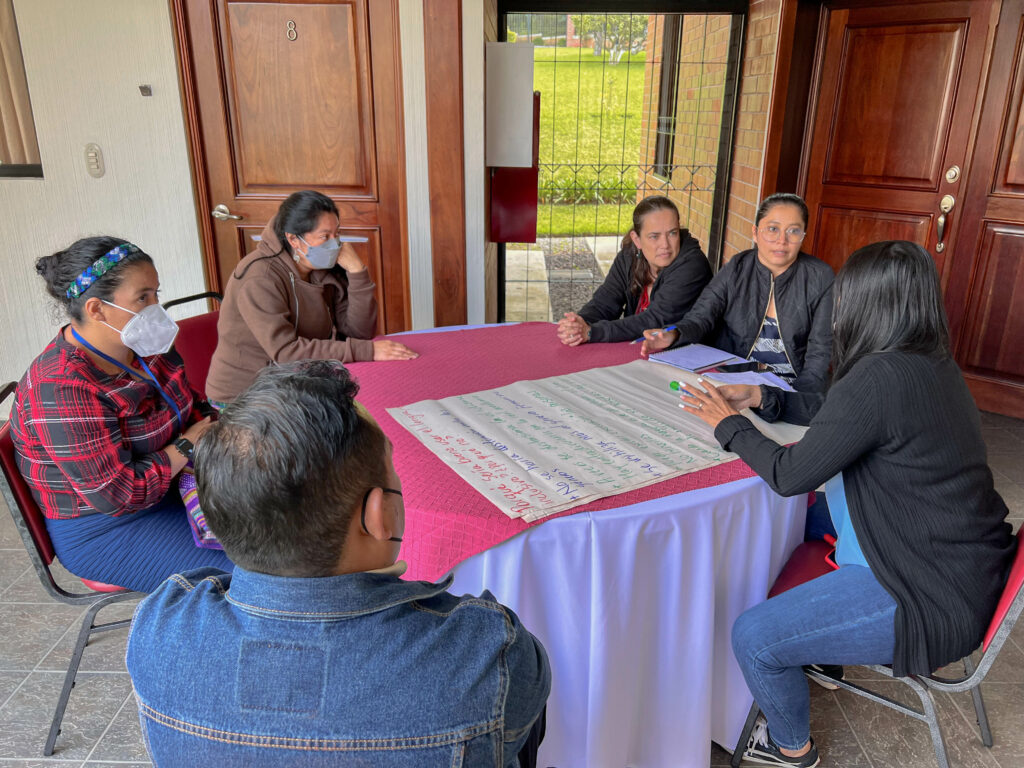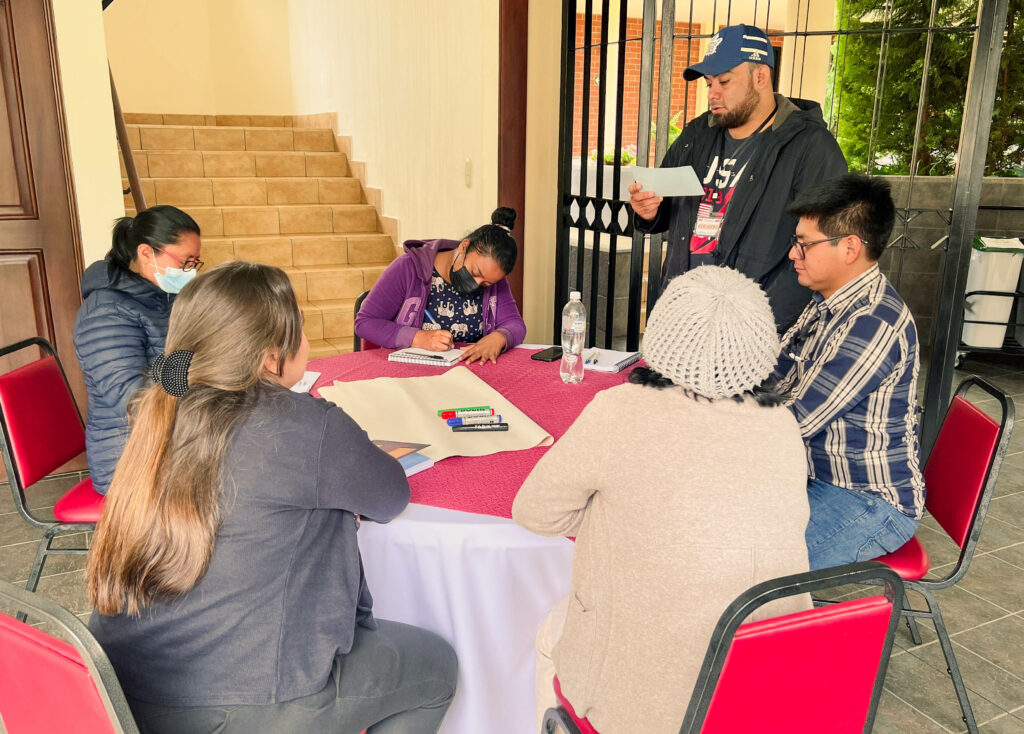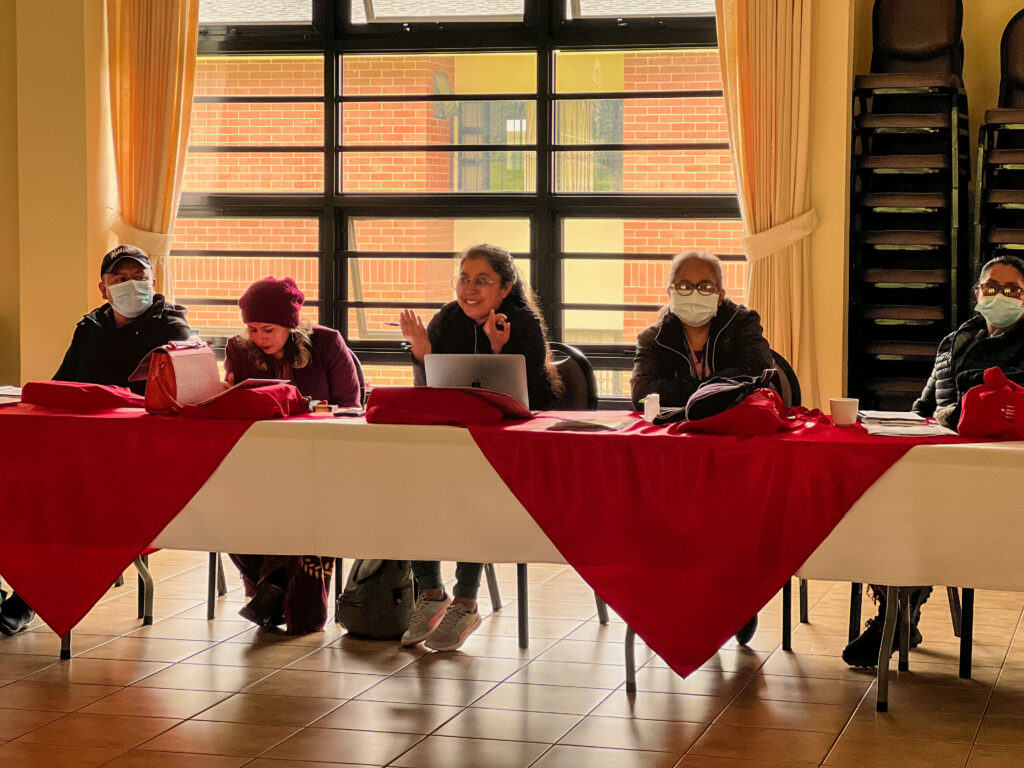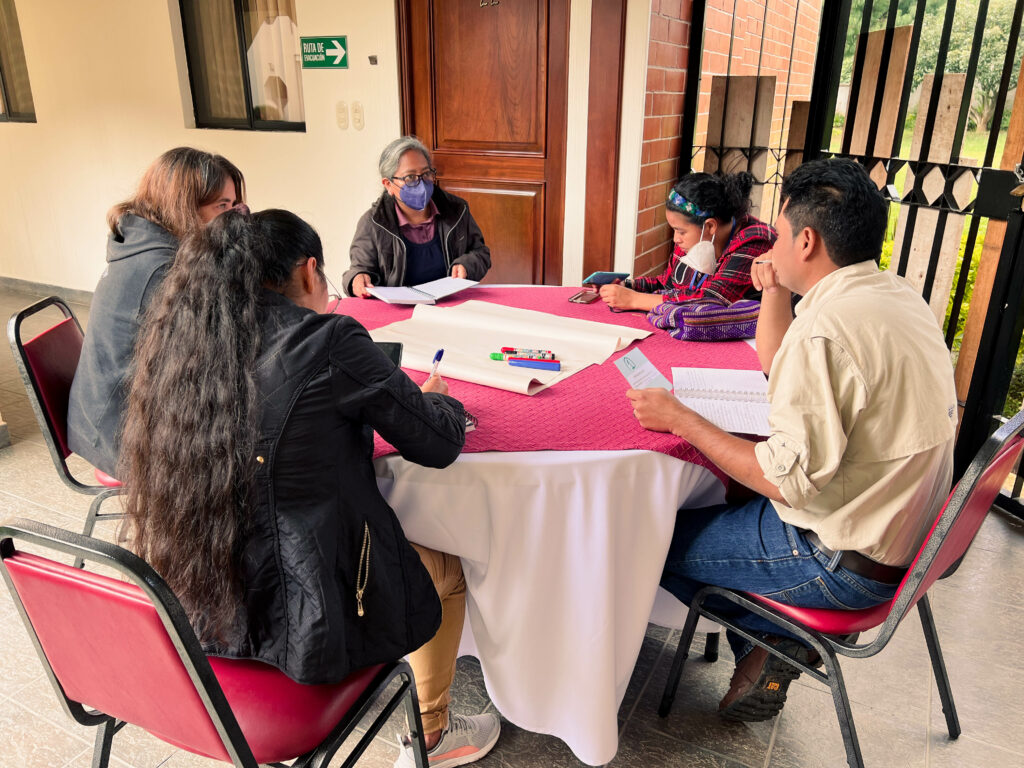Make Your Experiences Count. They Can Change the World.
LET’S BRING ALL OF OUR KNOWLEDGE AND EXPERIENCES TOGETHER.
TOGETHER WE KNOW MORE. TOGETHER WE ACHIEVE MORE. TOGETHER WE DO BETTER.
LET’S BRING ALL OF OUR KNOWLEDGE AND EXPERIENCES TOGETHER.
TOGETHER WE KNOW MORE. TOGETHER WE ACHIEVE MORE. TOGETHER WE DO BETTER.
Published: February 9, 2023
HORIZONT3000 partner organisations in Central America have initiated a process of awareness-raising on the appropriate use of inclusive language. During the Regional Meeting of the Communities of Practice held in Guatemala in October 2022, a consultation was held among all HORIZONT3000 partner organisations on the use of inclusive and non-sexist language, both in the media and in written documents.
Two partner organisations gave talks during the meeting about their experiences and then various aspects of the topic were discussed among all the participants, using the World Café methodology.

First, Marcos Molina, representative of the Salvadoran organisation ORMUSA – Organización de Mujeres Salvadoreñas por la Paz (Organisation of Salvadoran Women for Peace), spoke about gender inclusive and non-sexist language.
Marcos Molina explained that language establishes a close relationship with thought, ideas and values. Inclusive language means the elimination of the generic use of the male gender to designate people. Gender-inclusive language recognises the different genders that exist and makes the population visible in its diversity. It is about including in the different manifestations of communication, in visual, spoken and written language, equal and respectful treatment between women and men. The aim is to reduce the gender dimensions, an affirmative action to put women into the language of actions in political and protest content.
Marcos presented several alternatives for implementing inclusive language, for example, how to use more neutral terms, using men as well as women, the use of neutral words such as people or human beings, and talking about the specific population being referred to. For example: Chilean youth, people participating, students. Illustrations should also use images that show the diversity of people in terms of ethnicity, body shapes, culture and physical form, among others.
In the following link you can find M. Molina’s presentation.

Following M. Molina, Alina Menjivar, representative of the organisation Colectiva Feminista para el Desarrollo Local de El Salvador, gave a presentation on Inclusive Language in the media – in favour of a feminist communication culture.
Alina indicated that this is a process of change and learning, which does not happen overnight. That is why the Feminist Collective works to accompany and raise people’s awareness through different activities, such as workshops, radio and the internet (YouTube). Alina stressed that people must be sensitised at different levels in order to achieve understanding and long-term change, with the aim of having an inclusive world that recognises the rights of all groups of the population. In addition, it is important to raise awareness among the media and to accompany them in making the various population groups visible. Communication with a rights-based approach helps to protect the identity of children and women, because it also avoids re-victimisation in the case of gender-based violence. Another particular situation is that of people with disabilities; it is necessary to use a fair formulation and representation of the different groups of people and to recognise this population group when engaging in inclusive communication.
In the following link you can find the presentation by A. Menjivar: Inclusive language in the media.
After both presentations, the 14 partner organisations worked on the following questions using the World Café methodology.

It was concluded that there are still no documents guiding the use of inclusive language in partner organisations. Some of the participants in the regional meeting use inclusive language, but most of them have not yet thought about communication with a rights-based approach. Training processes are necessary at all levels, both internally and externally. Language must be unlearned in order to be able to use rights-based communication on a daily basis and in community work. Inclusive language is to be implemented in all media, on radio, television, social media, studios, brochures, websites and magazines. More educational processes with conviction, accompanied by training and awareness-raising are needed to generate beneficial effects.

An interesting point came up during the discussions of the partner organisations: from the Mayan Cosmovision there is no way to distinguish between feminine and masculine, it would be interesting to go deeper into these aspects with the Mayan organisations, so that this process can be fed back with their points of view.
Gender must also be visible in communication, the female gender must be visible, but also the conditions and identities of other population groups, be they women, youth, transgender people, people with disabilities and people of different ethnicities, among others, because it is an inherent human right that all population groups are visible, and one form of visibilisation is through language.
In a nutshell: HORIZONT3000 Central America continues the fruitful discussion with partner organisations, the debate contributes to an analysis of society, and from now on we are talking about a rights-based language.
In the following links you can find interesting tools related to the topic:
– UNHCR Recommendations FOR THE USE OF GENDER INCLUSIVE LANGUAGE
– INADI Inclusive Communication Manual